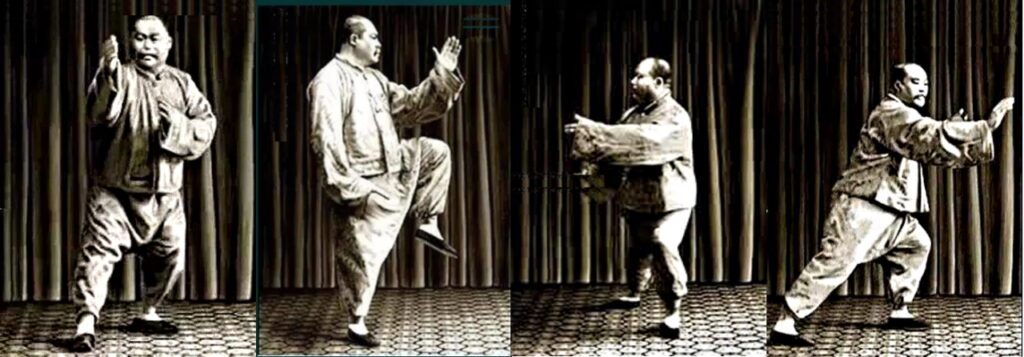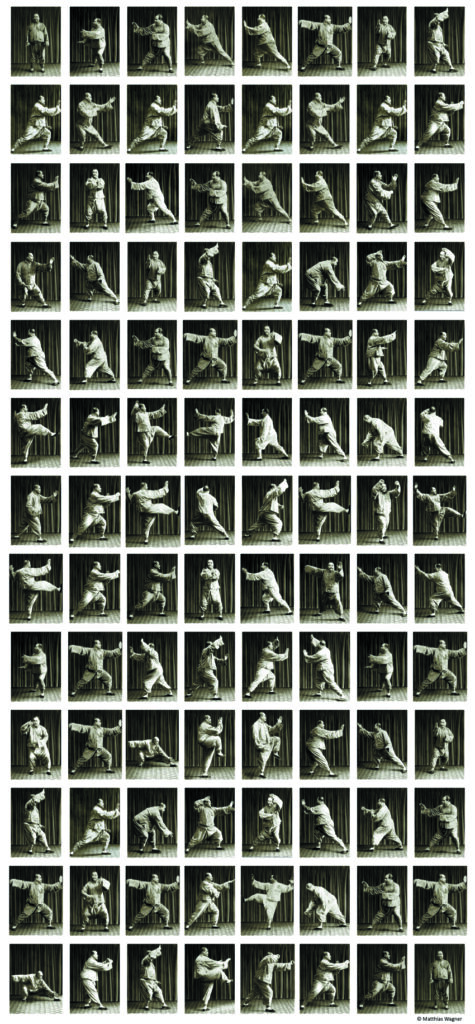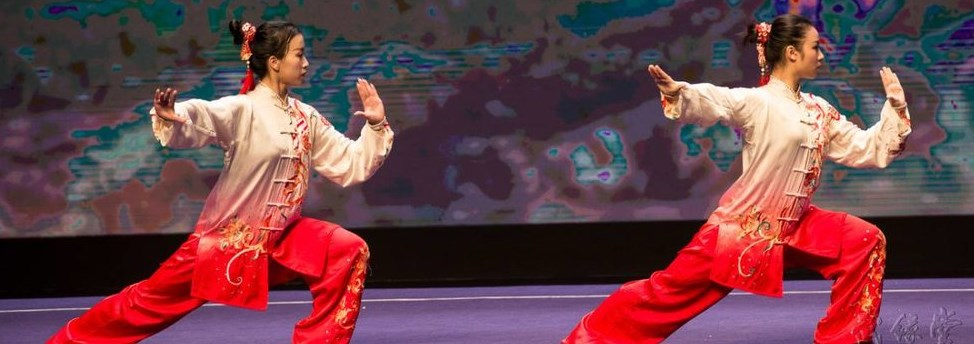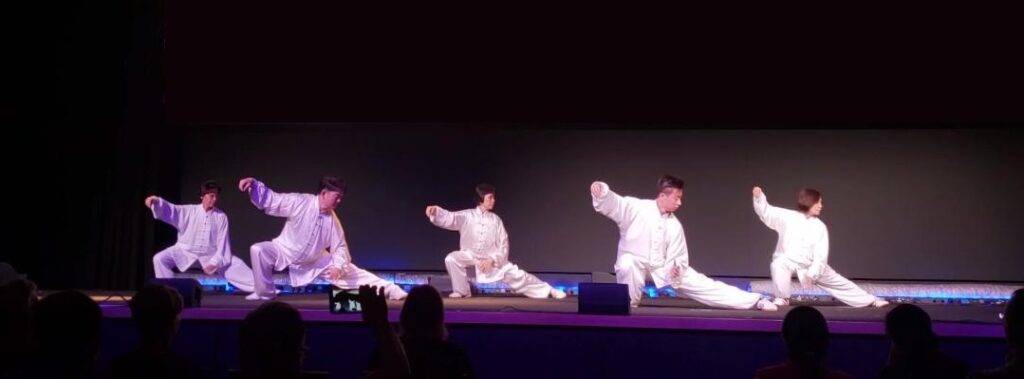How Long Does It Take to Do the Yang Family 24 Form
If you are new to tai chi, yous may not realize that there are multiple styles of tai chi. While the original tai chi style is Chen Manner from Chen Village, some other form emerged called Yang Mode tai chi. This is what nosotros often see expert in parks and it has become the most popular of the tai chi styles proficient today.
The appeal of the yang style tai chi form is the big sweeping, graceful and slow movements. Yang style allows people of all ages and fitness levels to get-go easily and continue to do information technology safely to amend their wellness. For the martial artist, the yang mode allows them to focus more intensely on the internal aspects of tai chi without the distraction of fancy jumps and fast movements.
The Origins of Yang Style Tai Chi

Yang manner is really short for Yang family way (楊氏; pinyin: Yángshì). Yang Way is the second tai chi mode developed later on the original Chen family unit style. The founder of Yang style was Yang Luchan (楊露禪, 1799–1872) who studied Chen fashion tai chi simply equally he became a tai chi master in his own correct, he developed his own expression of tai chi which then later became known equally Yang style tai chi.
Yang Luchan then passed on his fine art to his disciples who were directly or indirectly responsible for the development of the other iii major family styles:
- Wu,
- Hao
- and Sun.
The Yang Style Tai Chi that nosotros know today with its boring, expansive and soft movements is largely a effect of the modifications fabricated by Yang Chengfu (楊澄甫, 1883–1936). Primarily the explosive power (發勁; pinyin: fā jìn), jumps and foot stomps where removed. In its place, there is more accent on maintaining a large frame combined with a series of expansive opening and closing movements.
The Traditional Yang Style Tai Chi Course

Due to its popularity and widespread practice, the many yang manner schools and teachers offering their ain variation of the form and their own ways of counting the number of moves in the form. The number of moves can range from 85, 88, 103 to 108 depending on how they are counted. And then a amend mode to refer to the form is to telephone call information technology "Traditional Yang Style Tai Chi" (sometimes referred to every bit the "Long Form"), rather than naming it with the number of moves.
The traditional yang style form was designed for both improving wellness and martial arts practise. When expert at the correct step, it takes approximately 25 – thirty minutes to terminate the whole ready. The moves are too sequenced to increasingly challenge the practitioner from easy to medium to harder moves. Kicks and moves that require depression stretches or spins occur later in the class, this allows the practitioner to sufficiently warm upwards with the easier moves outset before attempting the harder moves.
The traditional Yang style tai chi form challenges and hones the flexibility, forcefulness, balance and internal energy of the practitioner in a prophylactic manner. Recalling and executing the moves of the full 25-xxx minute traditional yang style form makes it both a proficient mental too as cardio workout.
Yang Fashion Competition / Curt Forms

A brusque or simplified version of yang mode tai chi was developed in the 1950's past the Chinese Sports Committee for the purpose of competition. Key movements from the traditional Yang Style form were condensed into 24 moves so that information technology could be completed within vi minutes.
With but 24 moves to recall, the simplified yang fashion form became popular as information technology sounded easier to practise. With our modern busy lifestyles, many people gravitated to the simplified form to avert the longer learning bend of the traditional long form.
In fourth dimension, many schools and teachers started developing their own Yang manner short form (anywhere from 32, 37 or 48 moves) to cater to the pop demand for a shorter routine with fewer movements to call back and supposedly less time required to improve our health past practicing tai chi.
Learning Yang Style Tai Chi

If your goal is to ameliorate your wellness past practicing tai chi, it is probably non a good idea to have shortcuts.
To start, practicing a condensed yang style short form means you are cutting your conditioning fourth dimension from 30 minutes down to 6-15 minutes. The contest / short course incorporates all the central skills from the traditional yang style tai chi class inside 24 moves. It was designed for competitors to demonstrate their mastery of these skills. This means yous will exist executing hard and competition level movements from the very outset before you lot have time to warm up properly.
With the long class or traditional yang fashion form, a variety of gentle and basic movements help the practitioner warm up before having to execute a physically more advanced level movement. To prevent injury when practicing the avant-garde movements of the competitive brusk forms, competitors would add together extra warm upward exercises first to set for the physically challenging movements of the brusque course movements. In the stop, it takes the same corporeality of piece of work out time to practise an extended warm upward and and then do the short form as it does to simply practice the traditional long form yang style routine.
Another common reason people have for wanting to practise the short form is the need to remember fewer moves. Remembering more movements may have longer for united states of america to learn and retain simply the traditional long class helps u.s.a. improve and maintain our mental fitness. Past reducing the number of moves we need to recall, we cutting dorsum on the mental health benefits of the exercise which includes improved retentivity, concentration and cognitive functions.
Whether you are learning tai chi for health or martial arts, the benefits of learning and practicing the traditional yang style tai chi form far outweigh the competitive short class versions of yang style. The traditional form may seem intimidating at first with over 80 moves to retrieve. Our instruction methods suspension it down and give people time to learn the basics and lay a solid foundation of knowing the core movements for flexibility, residual, strength and proper biomechanics. As people practice weekly, monthly and yearly, they add layers of depth to their agreement of move, intention and energy. With repetition, it becomes natural to remember and recall the moves until it feels easy to call back.
Tai chi is a journey. There is no need to rush through your training in the quest for speed or less piece of work. It takes time to build upwardly our muscle memory and then the efforts of every moment of tai chi practice goes to improve our health and solidify our martial arts skills. In fact, returning to do the more than simple or basic skills regularly during training, propels our tai chi skills more significantly than solely trying to add a new avant-garde skill every time we do. We propel our ability to advance in the long term by re-learning basic skills with the fresh perspective of new insights gained at each level of our progression.
If you are nonetheless curious about what Yang Style Tai Chi looks like, here is a preview of our online training video that accompanies our regular classes: https://youtu.be/gwOHV8bKQyM
At Ji Hong Tai Chi Mississauga, we do non blitz through our instruction. Instead nosotros spend quality time with people learning tai chi for the outset time, assuring that they acquire movements well while paying close attention to posture, residue and relaxation. Having the right arroyo to practicing tai chi allows people to be successful at every level of tai chi they cull to appoint in.
Source: https://www.taichi.ca/2019/01/22/what-is-yang-style-tai-chi/
0 Response to "How Long Does It Take to Do the Yang Family 24 Form"
Postar um comentário